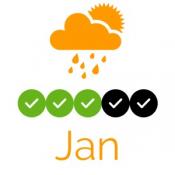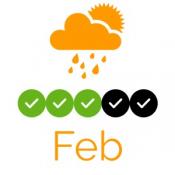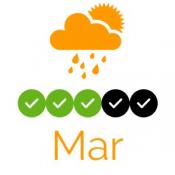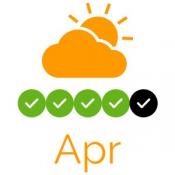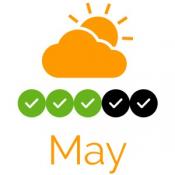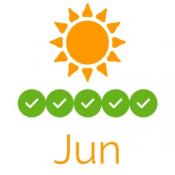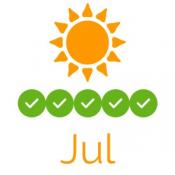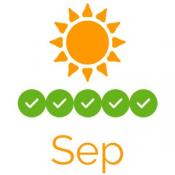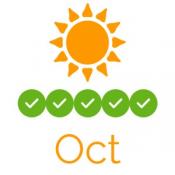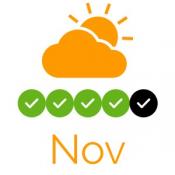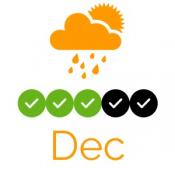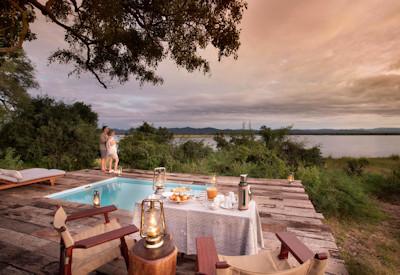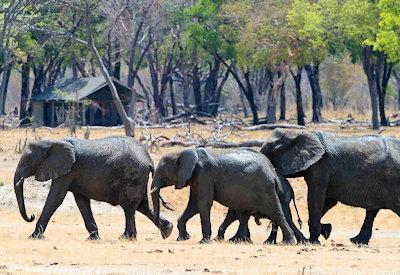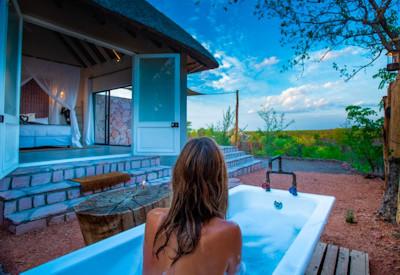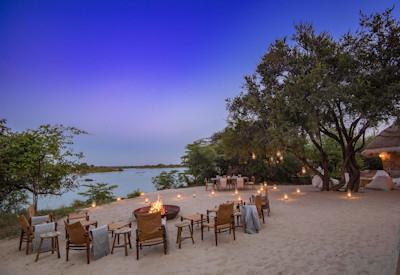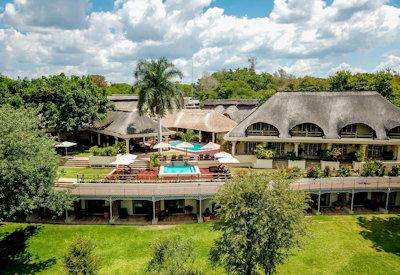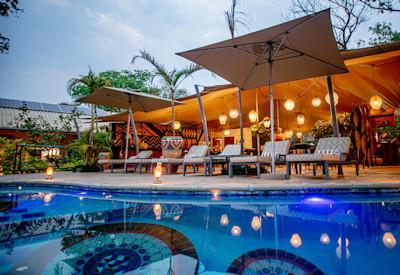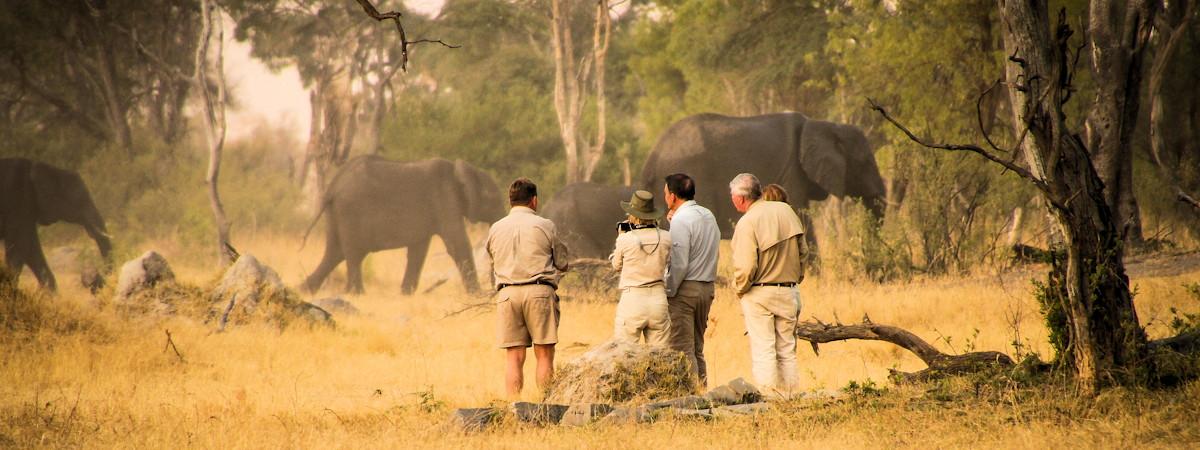
Hwange National Park
The largest national park in Zimbabwe covering a total area of 14 500 km², and that 14 500 km² of some of the most pristine wildlife sanctuary in Southern Africa. Home to a large selection of mammals, birdlife, reptiles, and that includes an impressive 40 000 strong population of elephants.
Formally known as 'Wankie National Park', it was founded in 1928 and has ever since been one of Africa's best known and famed National Parks, and for a good reason, the wildlife experiences within the park are nothing short of spectacular, as are those sunsets.
Hwange National Park Facts
- Size: 14 500 square kilometres
- Location: Western Zimbabwe
- When to visit the park: Year-round
- Altitude: In the region of 1050 metres above sea level
- Accommodation: Lodges In Hwange
Where is Park Hwange National Park located?
Hwange is located in the western region of Zimbabwe on the border with Botswana.
The park is a mere two-hour drive or a 30-minute flight south from Zimbabwe's Victoria Falls and 280 kilometres or a three-hour drive north from Bulawayo and the Motobo National Park.
Click here for a map view of the national park (we have used HERE maps as Google Maps has made a mess of the Hwange area); HERE WeGo Maps - Hwange National Park
Best Time to Visit Hwange National Park?
Hwange National Park is a year-round safari destination with wildlife sightings being easier in winter and birdlife being best in summer.
The winter months, July to October (the dry season), are best for wildlife sightings as the park is dry, and that forces the wildlife to visit the waterholes dotted throughout the park.
The summer months, December to March (the wet season), see's wildlife heading deeper into the bushveld, making it harder for the guides to find them when out on game drives.
Birdlife is good in the dry season but becomes spectacular when the rains start falling, and the migrant species start to arrive.
At Uyaphi.com, we do not have a preferred season to visit; we find that no matter the time of year, Hwange offers something completely different every time. Wildlife sightings are always good, as is the birdlife, game drives are amazing, as is the scenery, sunsets and surrounding bushveld. If you had to push us for an answer, we would probably say the spring, autumn or summer, as the winter mornings can get really cold.
Information On Hwange National Park
Hwange is home to over 100 mammal species, including over 40 000 elephants and almost 400 species of birdlife. Wildlife highlights include; lion, elephant, buffalo, leopard, wild dog, sable antelope, to mention only but a few.
Days are spent on safari activities, for example, game drives and short walking safari excursions; stopping off at hides and waterholes is a highlight, especially for those who love photography.
There is a good selection of safaris lodges and camps both within the National Park and just outside park boundaries in private reserves. The more expensive accommodation options are in private concessions within the park; only guests staying at these lodges get access to the area.
Main Attractions Of Hwange National Park
- Wildlife
- Birdlife
- photography hides
- Waterholes
- Sunsets
- Game drives
- 40 000 elephants
- Lions and leopards
- Wild dogs if you are lucky enough
- Tembo Plains Camp
Tembo Plains Camp is a sublime gateway to the captivating landscapes of Mana Pools National Park, Zimbabwe. Here, the harmony of luxury and nature creates an unparalleled retreat for discerning travellers.
The experience at Tembo Plains is enhanced by a passionate team committed to exceptional service and a strong connection to the wilderness. From arrival, the enchanting sights and sounds of the African bush draw you into an extraordinary adventure, offering an unforgettable safari filled with exploration and wonder.
- Davisons Camp
Davisons Camp in Zimbabwe is, without a doubt, a quintessential African tented camp offering an unparalleled safari experience. Situated in the exclusive Linkwasha Concession in the southeastern, wildlife-rich region of Hwange National Park, this camp provides an intimate connection to one of the park’s most breathtaking areas.
Overlooking a bustling waterhole, it offers a front-row seat to some of Hwange’s finest wildlife and birdlife throughout the day and night. From majestic elephants to vibrant flocks of birds, the constant activity at the waterhole immerses guests in the raw beauty of the African wilderness.
- Nantwich Lodge Hwange
Prepare to embark on an extraordinary journey at Nantwich Lodge Hwange, where eco-friendly luxury meets the heart of Africa. This enchanting lodge invites you to experience the wild beauty of Hwange National Park while indulging in comfortable accommodations that harmonise with the landscape.
Whether you are seeking thrilling game drives, tranquil bush walks, or wish to unwind amidst nature, Hideaways Nantwich Lodge Hwange is truly a sanctuary for adventure seekers and nature lovers alike.
- Mpala Jena
Step into the enchanting world of Mpala Jena, where the splendour of Africa comes alive! This luxurious safari lodge offers an extraordinary blend of adventure and relaxation, perfectly situated along the scenic Zambezi River.
With its elegant design and commitment to sustainability, Mpala Jena serves as a sanctuary for nature enthusiasts and travellers alike. From soaking in the breathtaking views to indulging in gourmet meals, each moment is crafted to ensure a memorable experience.
- Ilala Lodge
Nestled in the vibrant heart of Victoria Falls, Ilala Lodge offers an unforgettable blend of luxury, comfort, and adventure. This charming boutique hotel is ideally situated for guests eager to immerse themselves in the breathtaking beauty of the nearby falls, just a short stroll away.
With exceptional amenities, including a refreshing swimming pool, welcoming bar, and the opportunity to experience the stunning Zambezi River through a sunset cruise on the Ra-Ikane, Ilala Lodge is the ultimate retreat for families and adventurers alike.
- Shongwe Lookout
Shongwe Lookout is a boutique guesthouse set in the stunning landscapes of Victoria Falls, Zimbabwe. Nestled in one of the world's most stunning locations, Shongwe Lookout offers luxury and exciting outdoor activities, making it a memorable spot for adventure seekers.
Immerse yourself in African culture and landscapes with well-designed accommodations, offering relaxation and adventure. With thoughtful amenities and opportunities for exploration, Shongwe Lookout is the perfect place to enjoy Victoria Falls and create lasting memories.

